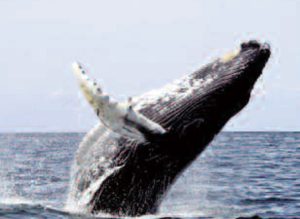China selectmen hold annual vision session: take no action
by Mary Grow
On Nov. 27, China selectmen began their annual visioning session, at which board members informally discuss goals and priorities, with a list of two dozen items reviewed a year earlier.
They added one short-term and three long-term items and found four items that have been or are being taken care of.
The short-term addition, suggested by Jeffrey LaVerdiere, is finding a successor to Town Manager Daniel L’Heureux, who plans to leave his position at the end of June after more than 23 years.
Longer-term, Board Chairman Robert MacFarland and new board member Donna Mills-Stevens recommended hiring a full-time policeman, if voters approve the expenditure. LaVerdiere questioned the need; Mills-Stevens said people want protection against vandalism and theft, and part-time officers are not enough.
Selectman Neil Farrington suggested reviewing the town’s personal property tax policy and perhaps setting a minimum valuation below which taxes would not be assessed. Mills-Stevens agreed, saying China’s personal property taxes deter new businesses from coming to town. L’Heureux was less enthusiastic, reminding board members of the state programs that ease the burden and pointing out that less personal property tax money from business means higher property taxes for everyone. Selectman Irene Belanger said updating China’s comprehensive plan should be on the selectmen’s list, though she and former Selectmen Ronald Breton agree the planning board needs to start the process. In the past a special committee has revised the plan. Belanger said China’s revised plan is due to be submitted to the state next year. Items from the 2016 list that are irrelevant or under way include:
- Dealing with recreational marijuana, now that town voters have agreed to ban it;
- Elderly housing, being considered by the China for a Lifetime Committee;
- Better internet service, the province of the Broadband Committee and, selectmen decided informally, eligible to apply for Tax Increment Financing (TIF) funding if needed, since good internet service is necessary for the economic development TIF dollars are supposed to promote; and
- Making the emergency shelter in the former portable classroom behind the town office usable.
The ongoing causeway project at the head of China Lake’s east basin, funded by TIF money, though neither new nor on the 2016 list, was discussed repeatedly. MacFarland proposed bonding part of the cost; LaVerdiere agreed the project is likely to cost more than the $750,000 voters allocated.
Farrington wants to continue discussion of acquiring all of the Bailey property on both sides of Lakeview Drive as part of the project. Board members would like to own the small lot now used for boat-launch parking, but it is financially connected to Bailey’s larger lot. That land, they suggest, could provide parking for the recreational trail that crosses it and perhaps a site for a new China Village fire station.
Additional public access to China Lake is another ongoing issue. Belanger is trying to revive the committee that recommended the town buy the Candlewood property on Lakeview Drive and develop a town beach, only to be rejected by voters. Farrington is interested in trying to acquire the lot north of the Four Seasons lot on Lakeview Drive, which he said has 800 feet of frontage on China Lake.
Discussion of selling town property covered a small piece on the east side of China Lake designated a boat launch for canoes and other hand-carried craft, but, L’Heureux said, too small for parking; the 39 acres opposite the former Candlewood Camps given to the town, for which various uses have been discussed but none pushed; and Bradley Island in China Lake’s west basin. Sidewalks or other pedestrian and cyclist safety measures, on the 2016 list, merited brief discussion, with Belanger proposing sidewalks in China Village and L’Heureux suggesting the relocation of the South China Library might warrant extension of South China’s sidewalks up Jones Road.
The manager mentioned state and federal grants in connection with the sidewalks and other items discussed, saying he is always looking for relevant grant money. Much of China’s regular budget comes from the state, he said. With state funding declining, for example school allocations and revenue-sharing, he advised selectmen to look into enhancing local sources.
Because the visioning session was not a formal meeting, selectmen took no action on any of the items discussed.



 China Village Volunteer Fire Department is based in China Village. Founded in 1947, the mission of this organization is to protect the lives and property of the citizens of our community, the China Village Volunteers Fire Department Operations Area, the Town of China and the mutual aid response areas with high quality of consistently professional fire protection, rescue services emergency management, and public safety programs. The department will accomplish this through a systematic delivery of education through fire prevention awareness, and proactive initiatives that focus on eliminating acts and/or practices that can cause fire. It will provide trained personnel and working equipment to suppress fire, perform basic extrication functions, rescue operations, and provide emergency public safety services.
China Village Volunteer Fire Department is based in China Village. Founded in 1947, the mission of this organization is to protect the lives and property of the citizens of our community, the China Village Volunteers Fire Department Operations Area, the Town of China and the mutual aid response areas with high quality of consistently professional fire protection, rescue services emergency management, and public safety programs. The department will accomplish this through a systematic delivery of education through fire prevention awareness, and proactive initiatives that focus on eliminating acts and/or practices that can cause fire. It will provide trained personnel and working equipment to suppress fire, perform basic extrication functions, rescue operations, and provide emergency public safety services.



















 FOR YOUR HEALTH
FOR YOUR HEALTH SCORES & OUTDOORS
SCORES & OUTDOORS
 REVIEW POTPOURRI
REVIEW POTPOURRI Before I encountered this admittedly very bulky set, I don’t believe I had ever seen a better one in all of my years of listening and collecting. It has assembled almost 70 singers and instrumentalists- Wilson Pickett, the Coasters, Aretha, Clyde McPhatter and the Drifters, Ben E. King, Otis Redding, La Vern Baker, Roberta Flack, Tiny Grimes, Brook Benton as well as lesser knowns, Eddie Floyd, Joe Morris, Don Covay, Tommy Ridgley, Chris Kenner, Doris Troy- oh well, the list goes on and on. And each is represented by one or more tracks, every one of them at the very least ranging from quite good to beyond superb.
Before I encountered this admittedly very bulky set, I don’t believe I had ever seen a better one in all of my years of listening and collecting. It has assembled almost 70 singers and instrumentalists- Wilson Pickett, the Coasters, Aretha, Clyde McPhatter and the Drifters, Ben E. King, Otis Redding, La Vern Baker, Roberta Flack, Tiny Grimes, Brook Benton as well as lesser knowns, Eddie Floyd, Joe Morris, Don Covay, Tommy Ridgley, Chris Kenner, Doris Troy- oh well, the list goes on and on. And each is represented by one or more tracks, every one of them at the very least ranging from quite good to beyond superb. There is nothing else to be known about conductor Ernst Schrader other than he is, or more likely, considering the time frame of this recording, was a real person – a legit label has stamped his name on one or two releases nobody has stepped forward to stamp him as a pseudonym. And the Berlin Philharmonic is most definitely for real.
There is nothing else to be known about conductor Ernst Schrader other than he is, or more likely, considering the time frame of this recording, was a real person – a legit label has stamped his name on one or two releases nobody has stepped forward to stamp him as a pseudonym. And the Berlin Philharmonic is most definitely for real.